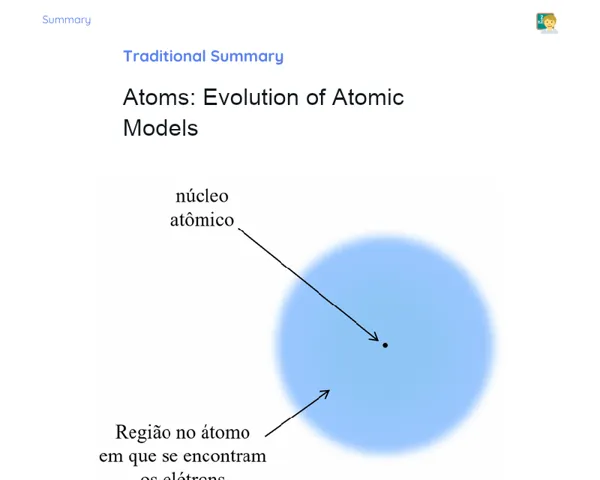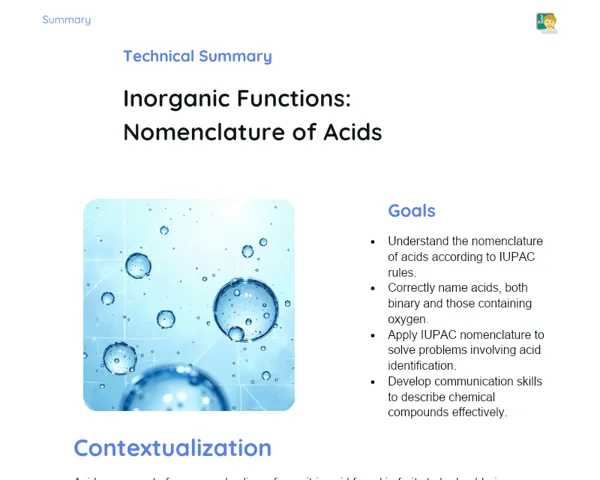Goals
1. Understand the basic principles of electronic distribution in atoms and ions.
2. Identify and explain unusual electronic distributions, with a focus on copper.
Contextualization
Atoms are the basic building blocks of matter, and grasping the concept of electronic distribution is vital for understanding the chemical properties of elements. The arrangement of electrons in various shells around the atomic nucleus determines how atoms interact with each other, leading to the formation of molecules and compounds. For instance, the vibrant colors of fireworks are influenced by the electronic distribution of the elements used. In today’s job market, particularly in sectors like pharmaceuticals and materials science, a solid understanding of electronic distribution is crucial. Chemical engineers leverage this knowledge to create new materials with specific characteristics, such as superconductors and efficient catalysts.
Subject Relevance
To Remember!
Basic Principles of Electronic Distribution
Electronic distribution is about how electrons are arranged in an atom or ion across different energy levels or shells surrounding the nucleus. These energy levels are represented by principal quantum numbers (n), and electrons fill these levels based on the Aufbau principle, which states that electrons occupy orbitals in the order of increasing energy.
-
Energy levels are represented by principal quantum numbers (n).
-
Electrons fill energy levels following the Aufbau principle.
-
The electronic configuration follows the sequence of the orbitals: 1s, 2s, 2p, 3s, 3p, 4s, 3d, 4p, etc.
Electronic Configuration in Atoms and Ions
The electronic configuration of an atom or ion illustrates how electrons are distributed across its various energy levels. For ions, this configuration adjusts according to the gain or loss of electrons, which leads to the formation of cations (positive ions) or anions (negative ions).
-
The electronic configuration represents the distribution of electrons in the energy levels.
-
For ions, the configuration is altered based on electron gain or loss.
-
Cations have fewer electrons compared to the neutral atom, while anions have more.
Anomalous Electronic Distributions
Certain elements demonstrate electronic distributions that do not adhere to the expected order of filling orbitals. These anomalies arise from additional stability due to half-filling or complete filling of sublevels, as observed in copper (Cu) and chromium (Cr).
-
Anomalous distributions occur due to extra stability obtained from half-filling or fully filling sublevels.
-
Copper (Cu) has an unusual configuration: [Ar] 3d¹⁰ 4s¹.
-
Chromium (Cr) features an anomalous configuration: [Ar] 3d⁵ 4s¹.
Practical Applications
-
Development of superconductors: A grasp of electronic distribution is essential for designing materials with superconducting properties, crucial for developing advanced electronics.
-
Production of efficient catalysts: Understanding electronic configuration plays a key role in producing catalysts that enhance chemical reaction efficiency in various industries.
-
Development of medications: The pharmaceutical industry uses insights from electronic distribution to manipulate molecular structures and design effective drugs.
Key Terms
-
Electronic Distribution: The arrangement of electrons across different energy levels around the atomic nucleus.
-
Aufbau Principle: The rule stating that electrons fill the lowest energy orbitals first.
-
Cations: Positively charged ions created through the loss of electrons.
-
Anions: Negatively charged ions formed by the gain of electrons.
-
Anomalous Distributions: Electronic configurations that do not follow the expected filling order because of greater stability achieved.
Questions for Reflections
-
How does electronic distribution impact the chemical properties of elements in various industrial applications?
-
In what ways can unusual electronic distributions be harnessed to create new materials with desirable properties?
-
What significance does understanding electronic distribution hold for technological innovation and scientific development?
Challenge Your Understanding: Building Atomic Models
To reinforce your knowledge of electronic distribution, you will engage in a hands-on challenge to construct three-dimensional models of atoms and ions, visualizing the arrangement of electrons in various energy levels.
Instructions
-
Form groups of 3 to 4 participants.
-
Choose a specific element or ion to model, ensuring that some groups work with elements that exhibit anomalous electronic distributions like copper.
-
Use foam balls of various sizes to represent protons, neutrons, and electrons, and utilize wires or sticks to illustrate the electronic layers.
-
Assemble the atomic nucleus with protons and neutrons, using wires to create electronic layers and distributing electrons according to the correct electronic configuration.
-
Present your model to the class, elaborating on the electronic distribution and highlighting any unusual configurations.



